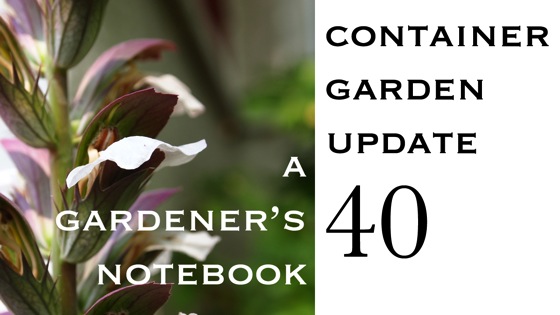Angelica stricta purpurea
Discovered via Pinterest User Pasika Khernamnuoy
My knees shook when I first discovered this rare & spectacular Angelica growing at the Mendocino Botanical Garden. Luckily, the kind folk who work there let us have some seed of this amazing treasure. Growing quickly to 4’ tall & 3’ across, its foliage is a beautiful, luxurious, purple-black, making it stand out like royalty amongst its neighbors. Next come the huge ruby boat shaped buds followed by large, 4-5” umbels color shifting from mauve to dark violet-purple. An absolute must have! And don’t forget that Angelicas are much loved by butterflies, too! EASY, fairly fast and blooms first year if Spring planted. Rich soil is best. Self-sows! — Annie’s Annuals
Angelica is a genus of about 60 species of tall biennial and perennial herbs in the family Apiaceae, native to temperate and subarctic regions of the Northern Hemisphere, reaching as far north as Iceland and Lapland. They grow to 1–3 m tall, with large bipinnate leaves and large compound umbels of white or greenish-white flowers.
Some species can be found in purple moor and rush pastures.
Angelica species grow to 1–3 m tall, with large bipinnate leaves and large compound umbels of white or greenish-white flowers. Their large, sparkling, starburst flowers[1] are pollinated by a great variety of insects (the generalist pollination syndrome), the floral scents are species-specific, and even specific to particular subspecies.[2] The active ingredients of angelica are found in the roots and rhizomes[3] and contains furocoumarins in its tissues which make the skin sensitive to light.[4] — Wikipedia
- Angelica stricta purpurea at Annie’s Annuals
- Angelica stricta purpurea at Wildest Dreams Garden Design
- Angelica stricta purpurea at Far Our Flora
Previously in the Interesting Plant series:
- Carex flagellifera ‘Toffee Twist’
- Sanguisorba
- Sulphur Fungus (Laetiporus sulphureus)
- Bauhinia
- Blue Flax (Linum lewisii)
- Chestnut (Castenea)
- Camellia japonica ‘Anemoniflora’
- Zaluzianskya villosa “Southern Lilac Drumsticks”
- Prickly Pear Cactus (Opuntia)
- Campanula
- Rudbeckia
- Caladium bicolor ‘White Queen’
- Fuchsia
- Palo Verde Tree (Parkinsonia florida)
- Espalier Fruit Trees
- California Poppy (Eschscholzia californica)
- Hydrangea ‘Zorro’
- Harlequin flower (Sparaxis tricolor)
- Erythronium
- Sempervivum
- Primula auricula
- Feathery Cassia (Senna auricula)
- Red Stick Dogwood (Cornus alba ‘Sibirica’)
- Japanese Maple (Acer palmatum)
- Kousa Dogwood (Cornus kousa)
- Giant Chalk Dudleya (Dudleya brittonii)
- Sunrose (Helianthemum nummularium)
- Australian/New Zealand Tea Tree (Leptospermum scoparium)
- Brugmansia Sanguinea
- Calico Monkeyflower (Mimulus pictus)
- Colocasia Esculenta
- Acer palmatum ‘Sango-kaku’ (Coral Bark Japanese Maple)
- Linderniaceae (formerly Torenia) Kuaui Deep Blue
- Passiflora (Passion flower)
- Firewheel Tree (Stenocarpus sinuatus)
- Anemone
- Allium Cowanii
- Symphyotrichum oblongifolius (Purple Aster)
- Hemerocallis ‘Derrick Cane’ (Daylily)
- Agastache ‘Aztec Rose’
- Rudbeckia hirta Moreno
- Kalanchoe Tomentosa
- Albuca namaquensis
- Hosta ‘Remember Me’
- Dahlia ‘Clair de Lune’
- Lovely silver-tinged fern on campus of Oberlin College, Ohio
- Tricolor Beech (Fagus sylvatica Purpurea Tricolor)
- Climbing Hydrangea (Hydrangea anomala petiolaris)
- Eremurus ‘Lemon Meringue’
- Lupine “Sunrise” (Lupinus hartwegii)
- Chinese Fringe Flower (Loropetalum chinense)
- Streptocarpus ‘Harlequin Blue’
- Nigella damascena (love-in-a-mist, ragged lady)
- Epiphyllum (Orchid Cactus)
- Sempervivum ‘Westerlin’
- Gladiolus ‘Kings Lynn’
- Hosta sieboldiana ‘Dorothy Benedict’
- Begonia “Escargot”
- Asparagus Pea (Psophocarpus tetragonolobus)
- Rosa banksiae (Lady Banks’ Rose)
- Primula ‘Victoriana Silver Laced Black’
- Oxalis versicolor
- Poached Egg Plant (Limnanthes douglasii)
- Parisian Carrots
- Fritillaria imperialis Rubra Maxima
- Clematis “Fascination”
- Swiss Chard “Bright Lights”
- Georgia Rattlesnake Melon
- Dianthus Barbathus “Green Ball” or “Green Trick”
- Coleus “Religious Radish”
- Black Forest Calla Lily
- Black Bamboo
Interesting Plant is a series from A Gardener’s Notebook blog and podcast that highlights the most interesting plants I find in my Internet and real-world travels — Douglas




